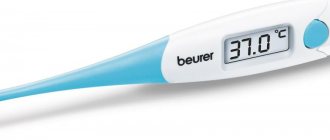The bath has a unique beneficial effect on the body, strengthening, cleansing and rejuvenating it. Therefore, for many, visiting a steam room turns into a special ritual, with its characteristic customs and rules, which leaves the most pleasant sensations.
However, in some situations, bath procedures can cause headaches. If you have a headache after a bath, what effective techniques will help quickly eliminate the ailment?
Symptoms of Heat Stroke
Heat stroke in a bathhouse is a painful condition that is dangerous to life and health. In a hot room, the body is unable to maintain normal body temperature, and the general mechanisms of thermoregulation are disrupted.
The first signs are:
- Feeling of weakness, lethargy, dizziness, heaviness in the limbs.
- A sharp increase in body temperature up to 40 degrees.
- Increased heart rate and palpitations. The tremors are so strong that many say that “the heart is jumping out of the chest.”
- Breathing is frequent and shallow.
- A sharp drop in blood pressure, accompanied by a “rumbling” in the ears.
More severe symptoms of overheating include:
- nausea;
- convulsions;
- uncontrolled urination;
- paralysis of the respiratory and vasomotor centers can lead to death.
When the first symptoms appear, you should leave the steam room or help the victim leave.
Why does heat stroke occur?
You can get heatstroke in a bathhouse if you don’t follow the basic rules for visiting it:
- long stay in the steam room;
- lack of body cooling procedures (swimming pool, shower);
- hard physical labor;
- obesity and excess weight;
- synthetic clothing, which prevents oxygen from reaching the skin and retains heat;
- medicinal hormonal treatment;
- bad habits (alcohol, nicotine addiction, etc.).
How long does heatstroke last?
Heat stroke appears suddenly, but can sometimes develop within 24 hours. The period of the painful condition mainly depends on the body and the presence of concomitant diseases.
With rapid development, the duration depends on the speed of first aid. Timely cooling and elimination of primary symptoms will help avoid the development of most negative symptoms.
Broom as a cold treatment
Most often we go to the bathhouse to steam with a broom. And this is certainly very useful. Its use increases blood circulation and promotes active sweating, and along with it, harmful toxins are removed from the body. A heated broom is used for massage, as well as for inhalations. The main thing is to take the right “model” with you, because everyone has their own healing effect.
For example, it soothes muscles and joints; linden has a healing effect on the respiratory and nervous systems. Made from fir and pine - plays the role of a disinfectant. And a eucalyptus broom has an excellent effect on the upper respiratory tract. This will support your body and help cleanse it, as well as increase sweating.
For whom the bathhouse poses a particular danger?
Sitting in a steam room for a long time is dangerous even for a healthy person, but there is a category of people for whom it is important to observe the measure when visiting a bathhouse or sauna. Risk groups include:
- Hypertensive patients with stable blood pressure of about 200 mm Hg. and more.
- Patients with respiratory diseases in the initial active, acute and chronic stages. These diseases include ARVI, tuberculosis, pneumonia and other diseases that create additional stress on the heart muscle.
- Kidney inflammation, water and electrolyte imbalance.
- Inflammatory processes of the gastrointestinal tract, including chronic conditions.
- Dermatological diseases.
- Violation of stable functioning of the central nervous system.
- Diseases of the genitourinary system, gynecological problems.
- Recovery period after surgery.
- Pregnancy is a contraindication to visiting a sauna or steam bath only if there are complications, but you should not overuse it and visit a very hot steam room. A consultation with an obstetrician-gynecologist is required first.
- The presence of low-quality tumors, oncology.
Causes of poisoning
Bathing procedures in the steam room are famous for their usefulness for all ages and are used even for colds. But there is also a dangerous side to folk tradition.
Often, due to haste and the desire to preserve heat, bathhouse attendants are in a hurry to close the chimney by closing the damper. Unextinguished coals continue to burn out barely noticeably, and carbon dioxide, being a product of this process, enters the room without signaling the danger either by color or smell. This situation develops due to the location of the furnace part of the stove in the steam room.
In the absence of ventilation or its insufficient power, the situation is aggravated and smoke increases.
Poor chimney maintenance, or lack thereof, contributes to the accumulation of burning and soot in the chimney shaft, impairing its functionality.
You can get burned not only from the stove; according to the same principle, poisoning occurs in the smoke of a fire, from improper use of household gas, and some drivers have the misfortune of getting burned in the garage.
What to do if you overheat
As a rule, heat stroke does not develop immediately in a bathhouse. At first, a person may feel slight discomfort, after which it is necessary to immediately complete the bath procedures. You should wash your face with cool water or douse yourself completely, and go to the dressing room.
If possible, you should lie on a flat surface and your head on a slight elevation to stabilize the pressure. Next, it is important to restore the water-salt balance. To do this, drink plenty of cool, but not icy, clean water.
Note! Soda, juice or alcoholic drinks are not suitable.
When your health has stabilized, you can start to slowly get dressed and go out into the fresh air. If you can’t get up on your own, it’s better to wait for help from your loved ones.
Symptoms of overheating in a bath
If after a steam room you feel tired, lethargic, have a rapid heartbeat, dizziness and nausea, you are overheated. Properly taken bath procedures will never have a negative effect and will not affect your well-being.
Overheating in a bathhouse can also be characterized by confusion, loss of orientation and even fainting.
The reason for poor health is not the bath, but the inability to properly and wisely steam, warm up, and choose the optimal temperature regime.
I have been saying for a long time that enormous power is hidden in the bathhouse kingdom. The bathhouse has its own rules and laws that must be strictly observed.
The warm summer season will soon end, the cold is already approaching. Man is a heat-loving creature, sometimes you just want to warm up! But you just have to overdo it a little with the heat of the bath, with the time spent in the steam room and that’s it - poor health is guaranteed!
First aid for heatstroke
If your health worsens, it is important to quickly eliminate the symptoms and stabilize the condition. Excessive fuss or friendly ridicule works against the victim, worsening his well-being every minute.
First of all, you need to leave the steam room and arrange a place to relax in the dressing room. It is best to lie down with your head elevated.
Important! If the patient’s condition is critical, a child, an elderly person or a pregnant woman is overheated, then it is necessary to call an ambulance. After the call, they continue to carry out basic measures to stabilize the condition.
You can additionally cover your head with a cool, damp towel or apply a compress to your forehead. Next, it is important to ensure a constant flow of fresh, cool air and provide plenty of clean water to drink.
Fainting in a bath or sauna
Fainting in a bath can occur due to insufficient enrichment of brain cells with oxygen. Fainting can occur not only in the steam room, but also after going to the dressing room. You can feel an approaching fainting in the bathhouse and avoid possible consequences in the form of injuries from a fall by following the characteristic symptoms:
- pale skin;
- weakness;
- severe dizziness;
- black spots before the eyes, blurred vision;
- nausea.
How does heat affect the pathogen?
Through research and experiments, scientists have identified several virus destroyers:
- temperature more than 60 °C;
- 1% chlorhexidine;
- 45% isopropanol;
- 70% ethanol solution;
- 30% n-propanol.
It is believed that the virus, which is already present in the body, will die from the fever, but this is a misconception. A person can stay inside a steam room for several hours in a row, but the virus will not die. The pathogen is reliably protected from heat by the host’s body. Even if a bathhouse visitor combines bathing procedures with hot steam inhalations, there will be no effect.
The virus will die if it is outside the body. The higher the temperature, the faster the process of destruction of viral cells will occur.
How to avoid overheating
When visiting a steam room, it is important to follow some rules that will help avoid heat stroke or even loss of consciousness.
Monitor the temperature
The temperature in the steam room largely depends on the level of humidity. In a typical Russian bathhouse, the temperature most often stops at 70–80 degrees.
However, the humidity in the room is quite high (up to 90%), which is formed due to watering hot stones. The higher the humidity level, the more difficult it is for the body to cope with stress.
With a normal ratio of heat (60 degrees) and humidity (60–70%), all internal organs will warm up evenly, the pores will open to remove toxins. To monitor the readings, you need to install a bath thermometer.
Healing procedures
Let's consider several effective, pleasant and very useful procedures that restore strength and strengthen the immune system - these are:
- trituration;
- therapeutic inhalations;
- tea party;
- using a bath broom.
Rubbing is done after visiting the steam room to increase sweating and speed up recovery. Rubbing can be done with special products sold in pharmacies, as well as with a self-prepared solution of honey and salt mixed in equal proportions.
Jpg" alt=»d439792f766e86e26a51550954beed831″ width=»340″ height=»217″ srcset=»» data-srcset=»https://prostudych.ru/wp-content/uploads/2016/12/d439792f766e86e26a5155 0954beed831..jpg 300w" sizes=»(max-width: 340px) 100vw, 340px»> Hot and humid steam helps clean and moisturize the respiratory tract, relieving a person of cough and runny nose. The therapeutic effect of such inhalation can be greatly enhanced by using aromatic essential oils of juniper, lavender, pine, eucalyptus, geranium and fir. To do this, add 15-20 drops of oil per liter of water, after which the prepared solution is sprayed onto the walls or poured into a special evaporator. If you put such a solution in an oven, the oil in it may burn on hot stones, thereby causing an unpleasant odor.
During bath procedures, a person loses a lot of fluid, the replenishment of which determines speedy recovery and well-being. The therapeutic effect of visiting the steam room will be enhanced by drinking special herbal teas, such as lemon balm, chamomile, mint, linden, thyme. You can add a slice of lemon or a spoonful of honey to the cup. This tea will not only restore strength between visits to the steam room, but will also bring pleasure from its leisurely consumption.
The Russian bath is considered a panacea for many ailments. Without a doubt, this is an excellent way to improve the health of the human body and prevent a number of diseases. Hot steam helps remove toxins from the body, improves health and revitalizes the skin.
In addition, such procedures perfectly stimulate blood circulation, increasing the tone of the whole body. However, is it possible to go to the bathhouse with a fever? Are bath procedures useful for colds or, on the contrary, dangerous? We will answer these and other questions in this article.
Why do you have a headache in the morning after a bath: causes of nausea after a sauna
Many people like to visit the bathhouse every week for health improvement and moral pleasure. Bath procedures help to cope with various diseases, cleanse the skin of impurities, toxins, accumulated salts, but often people complain that they have a headache after a bath.
Factors in the development of an unpleasant symptom
Due to headaches that occur after visiting a bathhouse, people often turn to doctors. This symptom occurs regardless of age. Painful sensations prevent a person from enjoying bath procedures and leading a normal lifestyle.
The task of the attending physician is to identify the factor that caused the pain and give a number of recommendations to the patient to improve his general condition.
Causes of headache after a bath:
- Incorrect ventilation. If the ventilation system in the bathhouse is made with errors, any beneficial effect from bathing procedures will be canceled. In addition, if the stove is installed incorrectly, carbon monoxide will enter the premises, which will aggravate the patient’s condition.
- People who rarely visit a bathhouse or sauna often stay in the steam room for too long. Because of this, heat stroke may occur, dizziness, fever, blood pressure, and nausea may occur.
- Vascular diseases. If a person has problems with the vascular system, he needs to be extremely careful when visiting the steam room. At the same time, carefully monitor your general condition. If skin redness appears or there is pulsation in the temples, you must quickly leave the steam room.
- Having bad habits. It is strictly forbidden to drink alcoholic beverages before, during, or after taking a bath. The same goes for smoking. Due to the effects of nicotine on the body, blood vessels narrow. For this reason, the brain lacks oxygen, and headaches, nausea, and dizziness may occur.
- Headaches often occur due to a lack of oxygen, which is poorly supplied to the body. In addition, carbon monoxide, which is released in large quantities when burning low-quality firewood, can aggravate the general condition.
- Heart disease, pressure changes. If a person experiences pressure surges, he needs to avoid bath procedures. High temperature increases the load on blood vessels and the heart.
- Diabetes. People who suffer from this disease should drink plenty of water. It actively leaves the body with urine. Bath procedures promote rapid removal of moisture through sweat. Due to dehydration, glucose levels increase, which can cause headaches.
- Osteochondrosis. When a person is in an uncomfortable position, the disease is activated. The blood vessels are compressed by tense muscles, causing the brain to starve from lack of oxygen.
Another reason why a person may have a headache is dehydration. It can occur due to the use of diuretic drinks or alcohol when visiting a steam room. Sometimes the general condition worsens due to allergic reactions. They arise from herbs and plants used to make bath brooms.
What is forbidden to do in the steam room?
Contraindications:
- Incorrect posture when in the steam room. A person must be able to take an optimal body position when staying in a steam room. It is better to take a horizontal position. If you sit on a shelf, your feet will be in the cold zone and your head will be in the hot zone. This will lead to a deterioration in your general condition.
- Having sex is also strictly prohibited when visiting a steam room. Sexual intercourse requires a lot of strength. Excessive physical activity can lead to general malaise, loss of consciousness, dizziness, and headaches.
- Before visiting the steam room, you should not eat large amounts of food. Overeating is bad for the heart and can lower blood pressure.
Doctors recommend following a certain diet on the day when bath procedures are scheduled. To prevent your general condition from worsening, you should avoid eating fatty, highly salted, and smoked foods. You should also eat less foods containing high amounts of protein.
Is visiting a steam room beneficial?
To experience the beneficial effects of bath procedures, you need to visit the bath regularly. Beneficial features:
- cleansing the body of toxins, waste, salts;
- calming the nerves;
- improvement of joint function;
- pain relief;
- getting rid of excess weight;
- activation of internal organs;
- relaxation of muscle fibers.
You cannot stay in the steam room for more than 20 minutes. In this case, you need to follow a number of rules and try not to experiment with extreme cooling.
How to get rid of an unpleasant symptom?
To get rid of a headache, you need to leave the steam room. At the same time, it is strictly forbidden to rush, fuss, or panic. You cannot run out into the fresh air to breathe oxygen.
Any sudden movements can lead to a deterioration in your general condition. A person should lie down on a shelf or bench in the dressing room and place a folded sheet or towel under his feet. Wait about 20 minutes.
If the condition improves, consult a doctor on an outpatient basis; if the pain does not subside, call an ambulance.
To choose an effective treatment method, specialists must determine the exact cause of pain. To reduce the range of possible causes of headaches, you can measure your blood pressure yourself. You can get rid of an unpleasant symptom using traditional methods or using folk remedies.
Traditional methods:
- Drink a small amount of mineral water.
- Freshly squeezed juice from viburnum, lingonberries, and strawberries will help with headaches.
- Additionally, you can take 2 paracetamol tablets and drink a pain reliever.
If the headache is caused by an allergic reaction, it is recommended to take a contrast shower.
Folk remedies:
- A medicinal decoction based on elderberry, chamomile, and St. John's wort. Use after the body has cooled down.
- Inhalation. Mix 5 parts mint, 2 parts orange, 2 parts chamomile essential oils. Pour the resulting mixture onto the hot stones in the steam room. By inhaling the resulting vapors, you can quickly improve your general condition.
The person needs to be slowly taken outside so that he can get some fresh air. If pain symptoms begin to subside, it is recommended to get a good night's sleep. You can take a pain reliever before going to bed.
Preventive actions
People who often visit the bathhouse know their body’s reaction to a sharp increase in temperature and rarely experience headaches after bathing procedures. If a person rarely visits the sauna, he is recommended to adhere to some rules:
- Carry out hardening procedures every day. At the same time, it is unacceptable to skip days of dousing with cold water.
- Stick to proper nutrition.
- To refuse from bad habits.
- Avoid bathing after physical activity.
- Before visiting the bathhouse, douse yourself with cool water.
Before performing bath procedures, you need to drink several glasses of medicinal infusions. Recipes for preparing decoctions:
- People with high blood pressure should drink drinks based on chamomile, motherwort, and St. John's wort.
- To increase blood pressure, you need to drink an infusion based on black currant leaves, burdock, and nettle.
Drink at least 4 cups of herbal medicinal drinks throughout the day.
What to do if a child becomes ill in the steam room?
If, while visiting the bathhouse, a child begins to have a headache or becomes dizzy, he or she must immediately be taken out of the steam room, given some fresh air, and called an ambulance. Any disturbances in the body in childhood are much more pronounced than in adults.
People who like to visit the bathhouse sometimes face problems with headaches after bathing procedures. Pain may occur unexpectedly. To improve your general condition as quickly as possible, you need to perform a number of actions and use folk remedies.
Did the article help? Rate it Loading...
Source: https://probani.guru/zdorov/golovnaya-bol/
Consequences
The results of carbon monoxide poisoning in a bathhouse depend on the dose of the toxic substance received and are divided into early - within a few days, and late - after weeks and months.
The pulmonary system is primarily affected. Symptoms begin with shortness of breath and may end with pulmonary edema, expressed in a strong cough with pink foam.
As carbon dioxide replaces oxygen, the body begins to suffer from hypoxia. The heart muscle strives to compensate for this deficiency by pumping blood at a higher speed. The greater the intoxication, the faster the heart contractions. Such a race is likely to lead to the development of arrhythmia and even myocardial infarction.
The bloodstream carries toxic carboxyhemoglobin to the brain. Impaired oxygen supply leads to dysfunction in different areas of the cortex. On the hearing side, it manifests itself as noise, the appearance of a ringing sound in the ears, and partial deafness.
The effect on the visual analyzer leads to the appearance of fog and “floaters” before the eyes, a decrease in visual function up to loss of vision.
Cerebellar hypoxia is expressed by impaired motor coordination and unsteadiness of gait.
Prolonged oxygen starvation leads to acute cerebrovascular accident - stroke.
Severe brain intoxication can result in seizures and coma. Full recovery from such a lesion is unlikely.
The further the consequences are remote in time, the less likely it is to restore function.
Nervous system:
- impaired memory and attention, possible amnesia;
- loss of coordination, up to complete immobility;
- impaired control of bladder and bowel functions;
- partial or complete loss of vision.
Heart and blood vessels:
- myocardial infarction;
- cardiac asthma;
- angina pectoris.
Respiratory system: frequent complicated pneumonia.
Due to the unstable condition in the next few months after poisoning, you need to monitor your health especially carefully, avoiding overload, hypothermia and contact with infectious patients.











